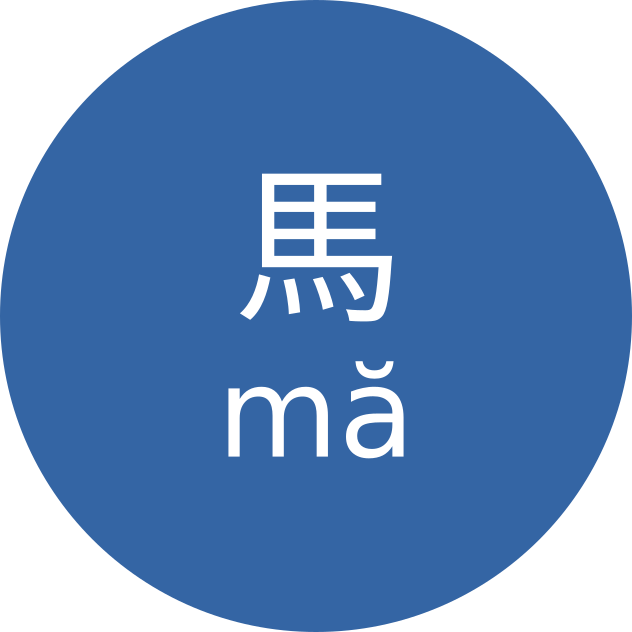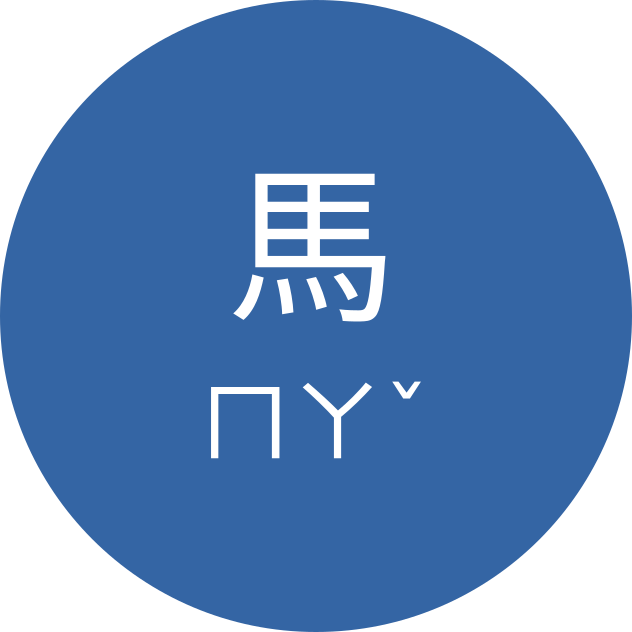Like most Mandarin learners, the first transliteration system I learned was Pinyin.
From the beginning, I had my difficulties with it. Some of the transliterations just didn’t make sense to me.
But the worst part of my experience was that Pinyin uses Latin characters. Whenever I opened Pleco, my eyes were drawn to the familiar letters. Thus I had a hard time learning Chinese characters.
Only after spending some time in Taiwan, I realized there are other transliteration systems.
My favorite is ‘Bopomofo’. In this post, I will explain to you why I like it so much and why you should give it a try!
What is Bopomofo
Bopomofo (also called Zhuyin 注音) is a transliteration system for Mandarin Chinese. The name comes from the pronunciation of the first four letters of the Zhuyin alphabet: ㄅ(bo), ㄆ(po), ㄇ(mo) and ㄈ(fo). In total, Bopomofo consists of 37 characters and four tone marks. These allow to transcribe all possible sounds in Mandarin.
So, what makes it so great for Mandarin learners?
If your native language uses Latin letters, Bopomofo is better for you
Distraction by Latin characters
For me, one of the biggest drawbacks of Pinyin is that it uses Latin characters. On the one hand, it’s nice that one doesn’t need to learn new characters to use it. But that’s where its biggest problems lie. For me, there are two kinds of distractions.
The preconceived sound given by Latin characters
My native language is German. So when I see the letters ‘xue’, my brain already has an idea of how they should sound. But when learning Mandarin, this is detrimental.
Fighting this subconscious sound attribution is definitely possible.
Yet, that’s not how it’s supposed to be.
Learning Mandarin is hard enough.
Don’t fight this unnecessary battle against your brain.
Using a new character set for Mandarin transliteration frees you from this hassle.
Visual distraction
Every time I opened Pleco, my eyes would do the same thing: jump straight to the Pinyin. It didn’t matter how much I tried to force myself to read the characters first. That’s not a big surprise, since my brain is so used to Latin letters. Bopomofo counters this problem by using a custom alphabet.
Try it out yourself! See the picture below and pay attention to where your eyes are looking.

Now do the same thing with Bopomofo.

Do you notice the difference?
In the beginning, one might think ‘But what if it slows down my reading?’. The truth is, it will. And that is a good thing.
Because you will become much slower reading transliteration, you will do it less. Instead, you will focus more on the characters. Which is what you should be doing anyway.
More concise character input
Using Pinyin to input characters on a keyboard has a drawback: You cannot enter the tone of the character. That means you might have to scroll through a long list of characters to find what you’re looking for.
Let’s say I want to input the character 錶 (biao3). When I input ‘biao’, the Pinyin system on my laptop gives me the following list:
- 表
- 標
- 彪
- 鏢
- 裱
- 驃
- 杓
- 膘
- 飆
- 飈
- 猋
- 脿
- 錶
The character I want is at place 13 on the list. My input system can only display five characters at a time. Thus, I have to jump to the third page to find the desired character. A lot of effort for finding a single character.
Of course, a learning system, like most smartphone keyboards, will find characters quicker.
But these systems rely on you having used the character before.
Bopomofo is better for finding characters fast.
Instead of only inputting the syllable, you can also input the tone of the character.
That way your input system can limit the search to characters with exactly this syllable+tone combination.
Let say I’m searching for 錶 (biao3) again. Inputting ㄅㄧㄠˇ gives me 錶 as the second suggestion. That’s because there are not that many characters spelled ‘biao’ with the third tone.
Part of Taiwanese culture
For people learning Mandarin in Taiwan, there’s another incentive to learn Bopomofo.
Bopomofo has become part of Taiwanese culture. You will see it on billboards. People will use it as a phonetic alphabet. Or to transcribe words from Taiwanese(臺語).
If you live in Taiwan and don’t know Bopomofo, you will miss out on this part of the culture. In my view, investing a few hours to learn another alphabet is worth the effort.
Also, I found that a lot of Taiwanese people don’t know Pinyin very well. They will be much more comfortable with Bopomofo when you need their help.
How long does it take to switch to Bopomofo
Switching to Bopomofo takes some time. I learned the alphabet with this video. This took me roughly six hours.
After learning the alphabet, I switched my phone’s input method to Bopomofo. I’d say that inputting characters was as fast as in Pinyin after about two weeks. The effort was well worth it because it helped me to focus on characters instead of the transliteration.
How to switch your phone’s input method
Android
I’m using Google’s Gboard. Go to settings, install the Zhuyin keybard and you’re good to go!
Apple
I don’t have an apple device, but my girlfriend likes 小麥注音輸入法.
What about Pleco
Pleco has excellent Bopomofo support.
Go to
Settings->Language->Mandarin->Mandarin pronounciation
to activate Bopomofo in your dictionary.
Conclusion
Now you know why Bopomofo is superior to Pinyin. Let me know in the comments if you think I missed anything!
I hope you learned something that can help you on your journey to mastering Mandarin!
Follow me on twitter (@bewagner_) for more of my thoughts on learning Mandarin!